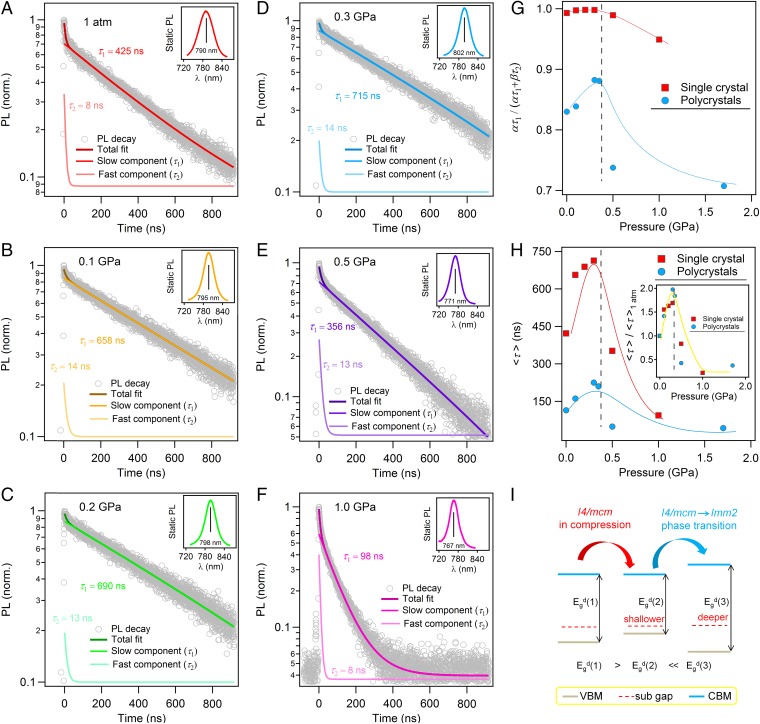Fig. 3.
Significant carrier-lifetime prolongation of MAPbI3 upon compression. (A–F) In situ high-pressure TRPL measurements on a MAPbI3 single crystal at 1 atm (A), 0.1 GPa (B), 0.2 GPa (C), 0.3 GPa (D), 0.5 GPa (E), and 1.0 GPa (F). Insets in A–F show the static PL signal at respective pressures. From the static PL spectra, main peaks were clearly identified and the respective TRPLs were measured from their wavelengths. For all measured pressures, both slow and fast components of carrier lifetime were determined using biexponential fittings on time-decay traces and denoted as τ1 and τ2, respectively, as shown in A–F. (G) Pressure dependence of the relative contribution of the bulk-dominated slow component, ατ1/(ατ1+βτ2), for both MAPbI3 single-crystal and polycrystals samples. (H) Pressure dependence of the mean carrier lifetime, <τ> = [ατ1/(ατ1+βτ2)]τ1 + [βτ2/(ατ1 + βτ2)]τ2, for both MAPbI3 single-crystal and polycrystal samples. Peak values in carrier lifetimes of MAPbI3 were observed at 0.3 GPa. (H, Inset) A normalized result. Compared with the values of <τ> measured at 1 atm, dramatic increases of ∼70% and ∼100% were observed at 0.3 GPa for single crystals and polycrystals, respectively. (I) Schematic of the correlation between band edges approaching and carrier-lifetime prolongation. As the band gap narrows, the subgap states closing to band edges will be shallower; thus, lower trap states can be expected.

